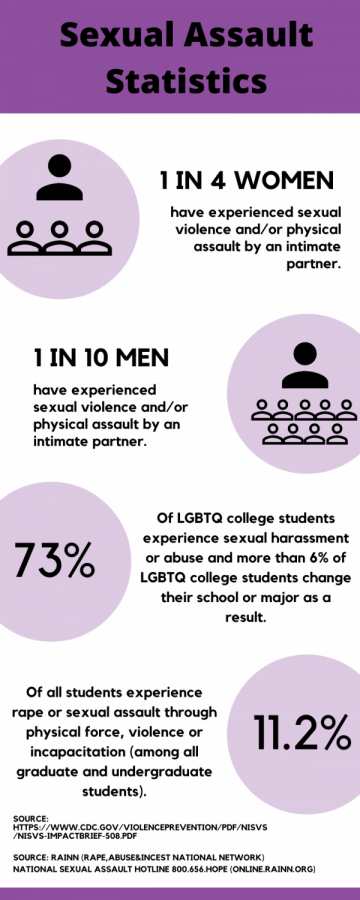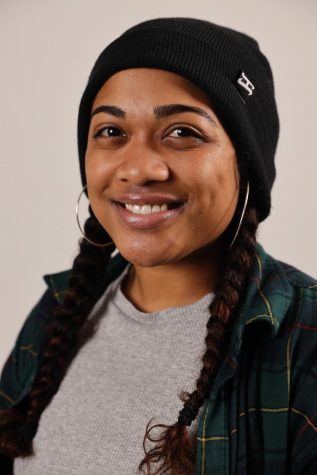Virtual Museum Challenges Perception of Rape Culture
May 22, 2020
In efforts to raise awareness on sexual assault and present a more inclusive space for survivors to share their stories, an online exhibit challenges common stereotypes and rape culture perceptions on sexual violence.
As you go through the exhibit, illustrations of the survivor’s outfits range from everyday attire to dresses and pajamas as they hang along the walls of the virtual gallery. Each outfit represents a survivor’s story of when they were sexually assaulted, what they were wearing at the time and how their identity played a part in their story.
The exhibit was originally planned as an in-person gallery that would have been presented within Burke Hall. However, due to the COVID-19 outbreak, the event was changed to an online format showcasing the exhibit through a virtual tour. Despite the change, Gallego was happy with the finished exhibit and said that she tried to make sure the virtual format properly represented each narrative.
Isabella Gallego, the lead behind the planning and installation of the “What Were You Wearing?” exhibit at SF State, is an intern for the Health Promotion and Wellness department who focuses on sexual assault . In efforts to raise awareness on the heavy issue, Gallego wanted to illustrate that it’s not the survivors fault and to open up a safe space for survivors to share their narratives.
“What I wanted was for people to be able to come and look at that piece of clothing and see themselves, and be like, oh, that’s something that I’ve worn or that’s something that I have in my closet,” said Gallego. “It was just like the overall arching theme of it is not the survivors fault and it is not what they were wearing.”
This year’s Peer Health Leadership internship required each intern to create a passion project which gave SF State students an opportunity to explore a specific issue and present it in any format they wanted.
The installation project originated from the University of Arkansas in 2013, created by Jen Brockman and Dr. Mary Wyandt-Hiebert. The idea was inspired by Dr. Simmerling’s poem, What I Was Wearing.
Denmark Diaz, who works as one of the health educators in the unit, focuses specifically on men’s health and sexual violence prevention within HPW.
“The beauty of this project is that it is led by a student,” said Diaz. “I feel like it just all came together because we have a wonderful team of graphic designers and we work very closely with the different offices on campus that work on sexual violence.”
Last year’s projects included a bi-weekly tabling event titled “Thinking of You,” where people were welcomed to gather and write letters of support and encouragement for sexual assault survivors. The event also held information on specific resources offered on and off campus.
After much research on the issue on how sexual violence cases are treated on campuses, Gallego wanted to create a gallery that was dedicated to all survivors and provide a space where individuals could share their own narratives.
“A lot of the research was saying how it is very focused on like cis-gender, heterosexual, white men and women,” said Gallego. “It is dedicated to all survivors, but we wanted to especially dedicate it to communities of color, different identities, people with disabilities, different socio-economic statuses and people existing within that intersection.”
Survivors were able to anonymously submit their stories online for safety and confidentiality purposes. Other services offered on campus such as The SAFE Place, not only advocates for survivors but also provides various health resources.
Stacy Peterson, manager at The SAFE Place, said that she worked with Gallego and the HPW team to create a system that would not require mandatory reports to equity programs in compliance with the police.
“They connect and reflect the students’ experience in a way that those of us who have or have a different generation may not fully be able to conceptualize,” said Peterson. “And so giving students the opportunity to create these passion projects, really allows them to show us what their experience is and thereby connecting better with other people who have gone through it.”











